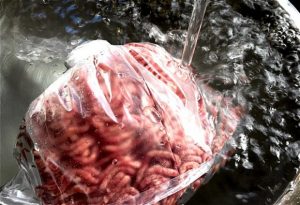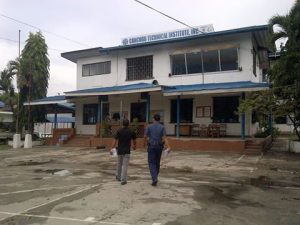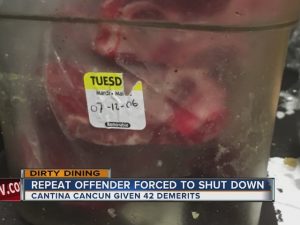In what could be yet another case of PR before publication, Science Nordic has issued a press release extolling the virtues of thawing meat in cold water rather than in the fridge. The PR does not address issues of cross-contamination, how a consumer would determine if the meat was actually thawed, and most important, fails to cite a peer-reviewed publication, other than saying, “based on the institute’s own experiments with freezing and thawing different kinds of foods.”
 If it has been published, it’s standard to include a link to that research, otherwise, it’s a fluff piece.
If it has been published, it’s standard to include a link to that research, otherwise, it’s a fluff piece.
But you decide.
Most people know that food should be frozen as quickly as possible, to retain quality and flavour. The same turns out to be true when it comes to thawing frozen food, too —quicker is better.
So says Susanne Ekstedt, a researcher at the Food and Bioscience unit of SP Technical Research Institute of Sweden in Gothenburg.
“This is something food scientists have known to be true for a long time now. But this knowledge is mostly confined to the food industry. Most people don’t seem to be aware of this,” Ekstedt said.
What often happens instead is that people thaw their meats slowly in the refrigerator. While keeping meat cold while thawing is important to limit bacterial growth, it’s possible to thaw food quickly in water.
Ekstedt’s recommendation is based on the institute’s own experiments with freezing and thawing different kinds of foods. Their conclusion: The best way to thaw frozen meat or fish is to put it in cold water. You have to wrap the food in plastic, of course, to keep the water out of the food, but water will thaw food quickly and effectively.
The reason for this is simple: Water conducts heat better than air. And the faster food is thawed, the better it tastes.
One reason that freezing and thawing foods quickly preserves their quality has to do with ice crystal formation.
When anything, be it snow or food, stays slightly below the freezing point for a long time, it creates the perfect environment for large ice crystals to grow.
In food, the formation of these large ice crystals during freezing can do a great deal of damage to cells, reducing the food’s ability to hold in fluids after it is thawed.
 The result? Dry meat and flaccid vegetables.
The result? Dry meat and flaccid vegetables.
Clarence Birdseye, who is credited with being the founder of the modern frozen food industry in the United States, is said to have discovered this principle himself when he worked in Labrador and was taught by the native Inuits how to ice fish.
He discovered that fish he caught at -40 degrees C froze quickly and tasted quite fresh when thawed. He went on to invent a series of techniques that allowed foods to be frozen quickly, preventing the formation of large ice crystals.
To this day, the food industry is well aware of the problems posed by ice crystal formation. In fact, it’s not uncommon to buy frozen vegetables with labels that advise consumers to thaw vegetables quickly.
Bjørg Egelandsdal is a professor at the Norwegian University of Life Sciences in Ås whose specialty is meat.
“There has never been any good scientific evidence behind the advice that food should be thawed in the refrigerator,” she says.
“Maybe the idea behind this advice is that refrigerator thawing is most hygienic. It is true that meat and other foodstuffs should be stored in the refrigerator if they are thawed, but it is definitely better to thaw food quickly in water if you are going to use it right away,” she said.
Another potentially quick way to defrost food, the microwave, can be hard on meat, says Per Einar Granum, a microbiologist also at the Norwegian University of Life Sciences.
He says if you are going to use the meat in a casserole or stew, thawing it in a microwave can be acceptable, because the meat will later become tender as it cooks.
But if you plan to grill your meat, forget the microwave. Even if you use the “thaw” program, it is “a little too brutal for the meat,” he says.
 The students, from Concord National School in Barangay Basak San Nicolas, vomited at least five times after reportedly drinking a bottled coffee drink, which was distributed as sample at the school past 3 p.m. Wednesday.
The students, from Concord National School in Barangay Basak San Nicolas, vomited at least five times after reportedly drinking a bottled coffee drink, which was distributed as sample at the school past 3 p.m. Wednesday.










